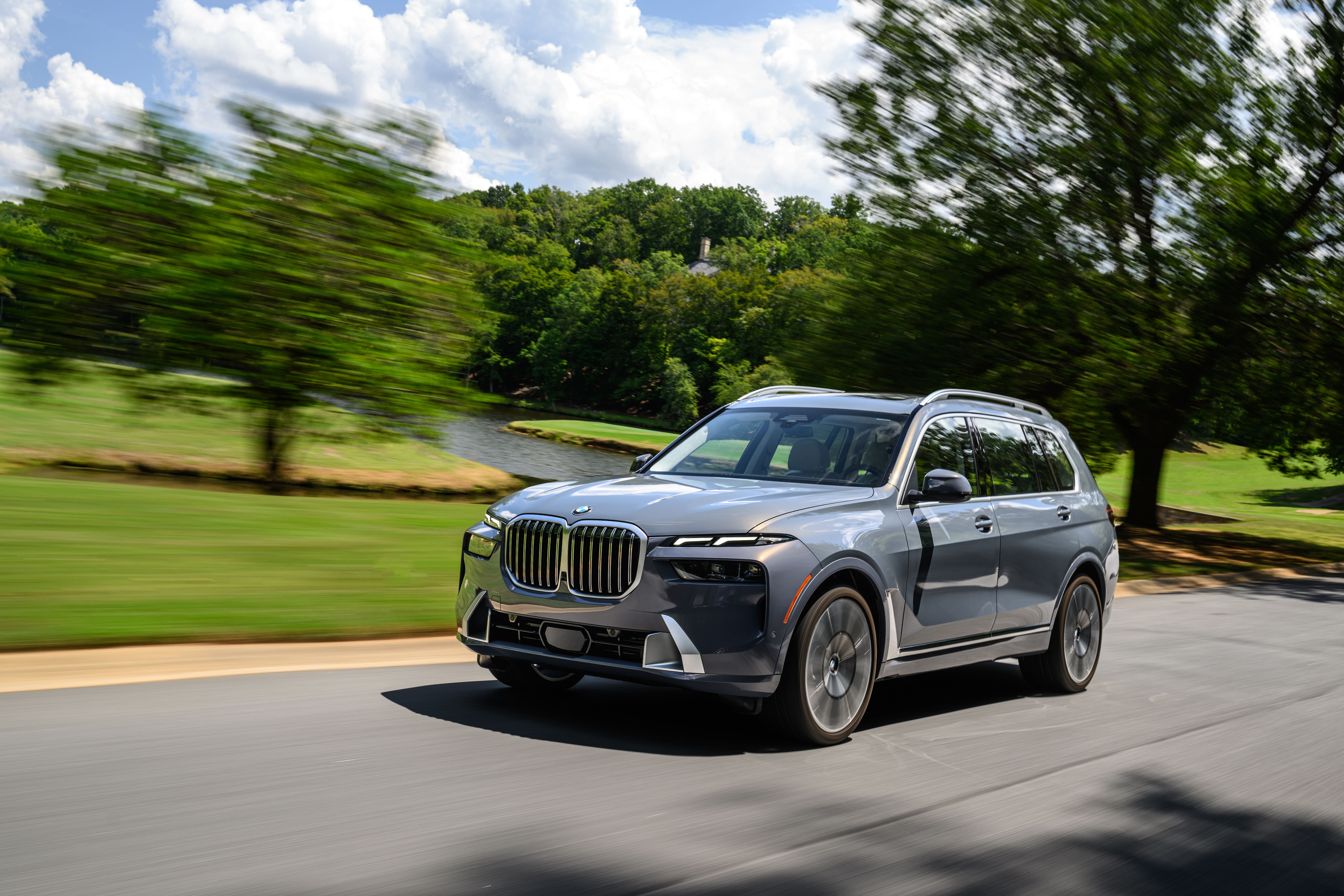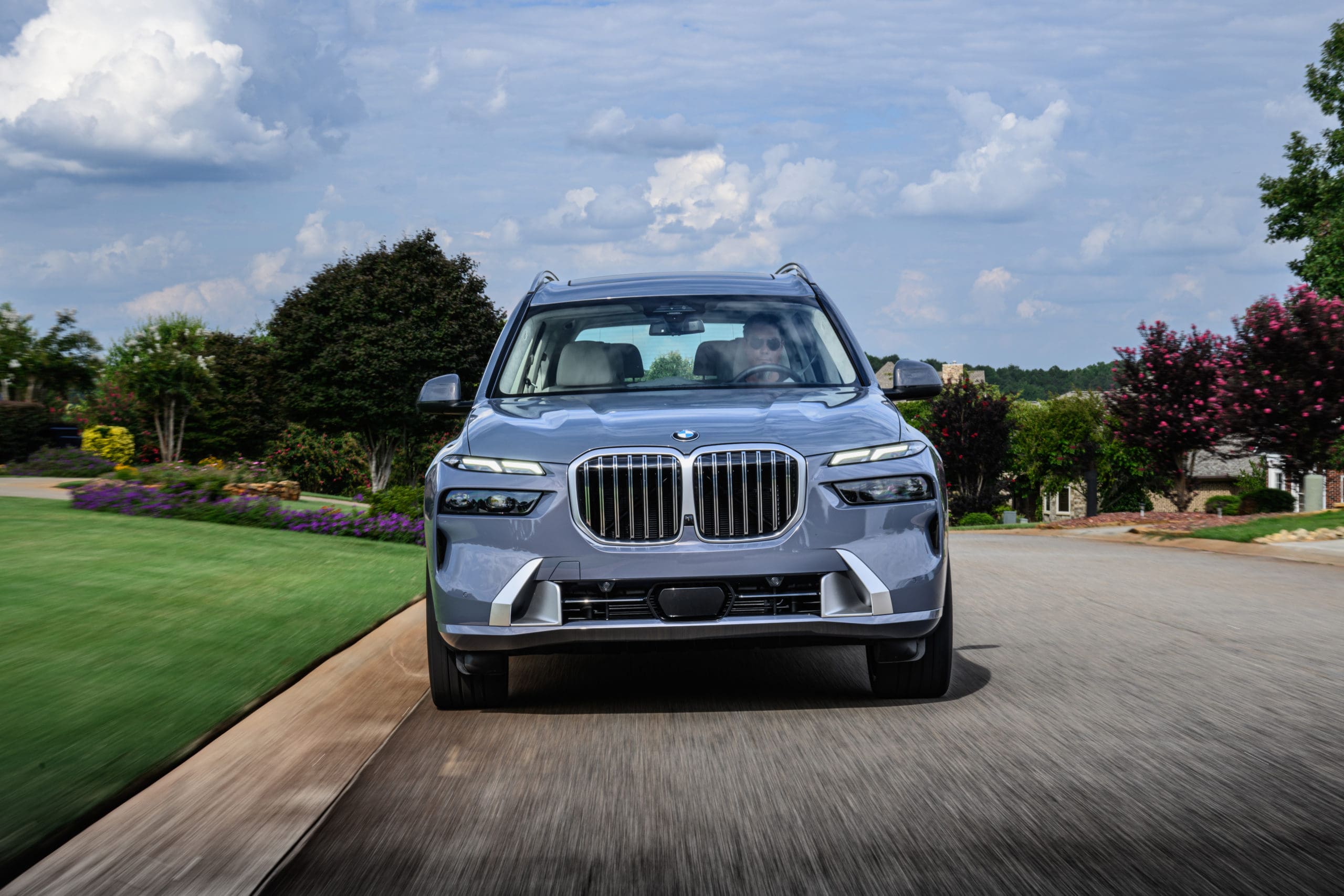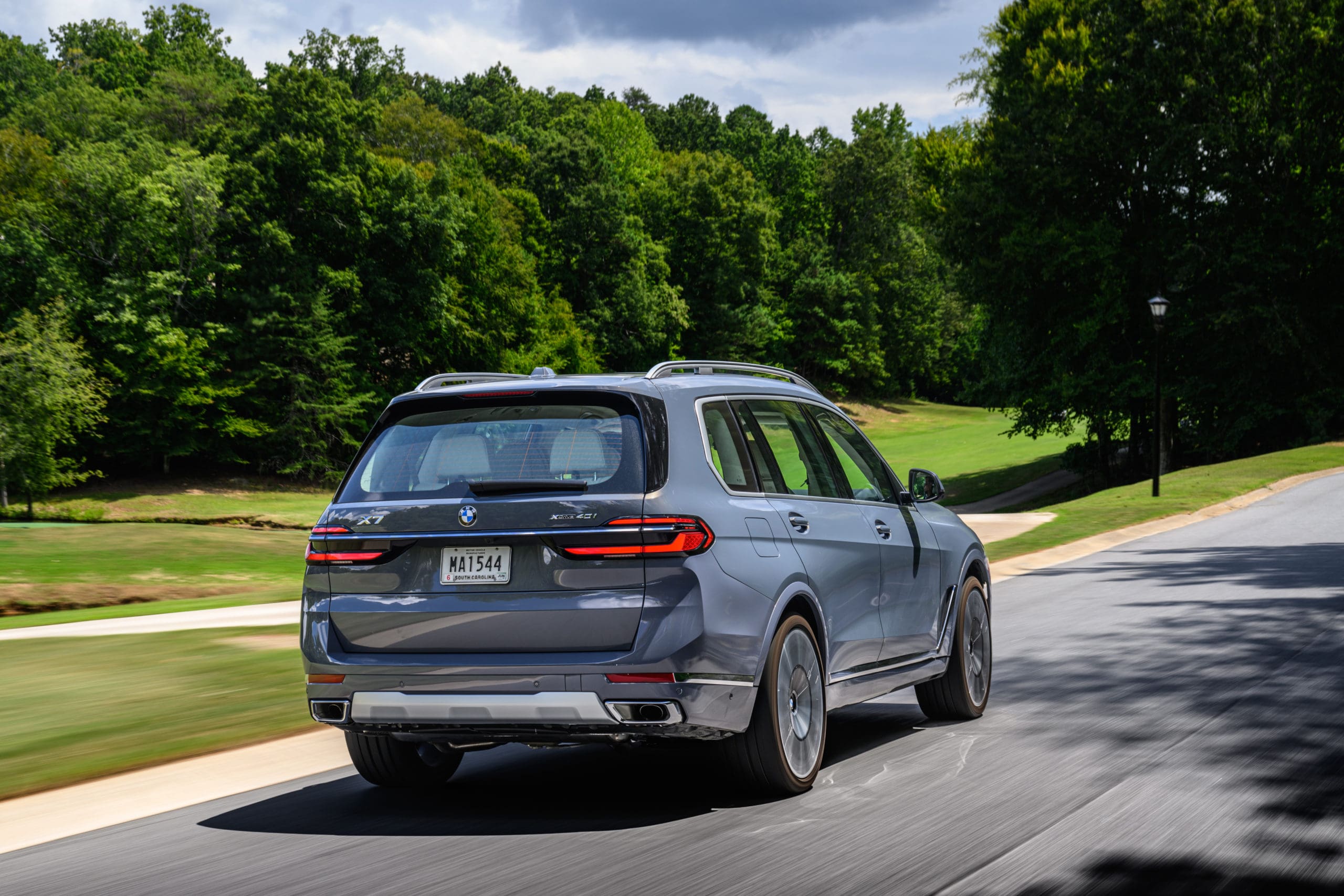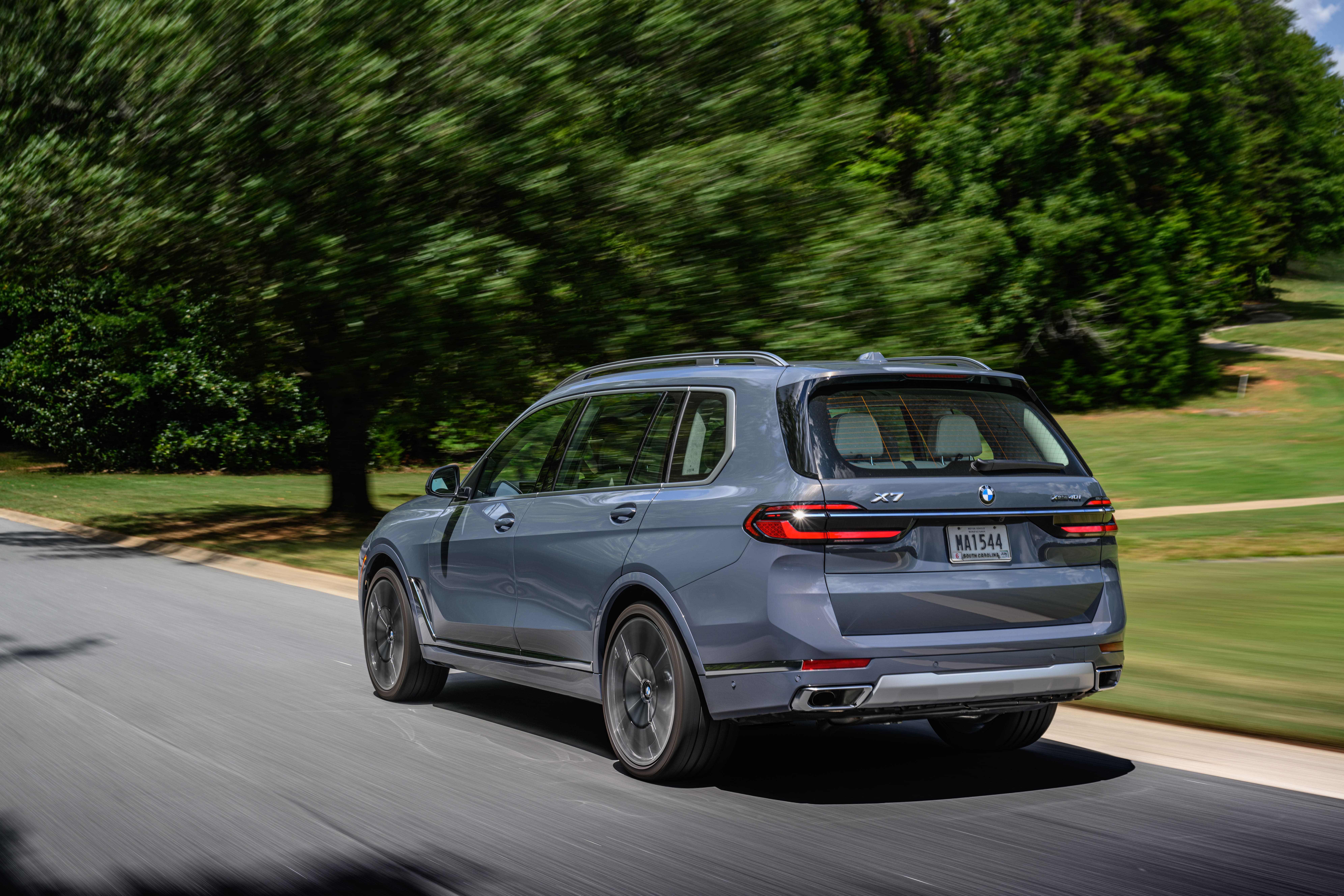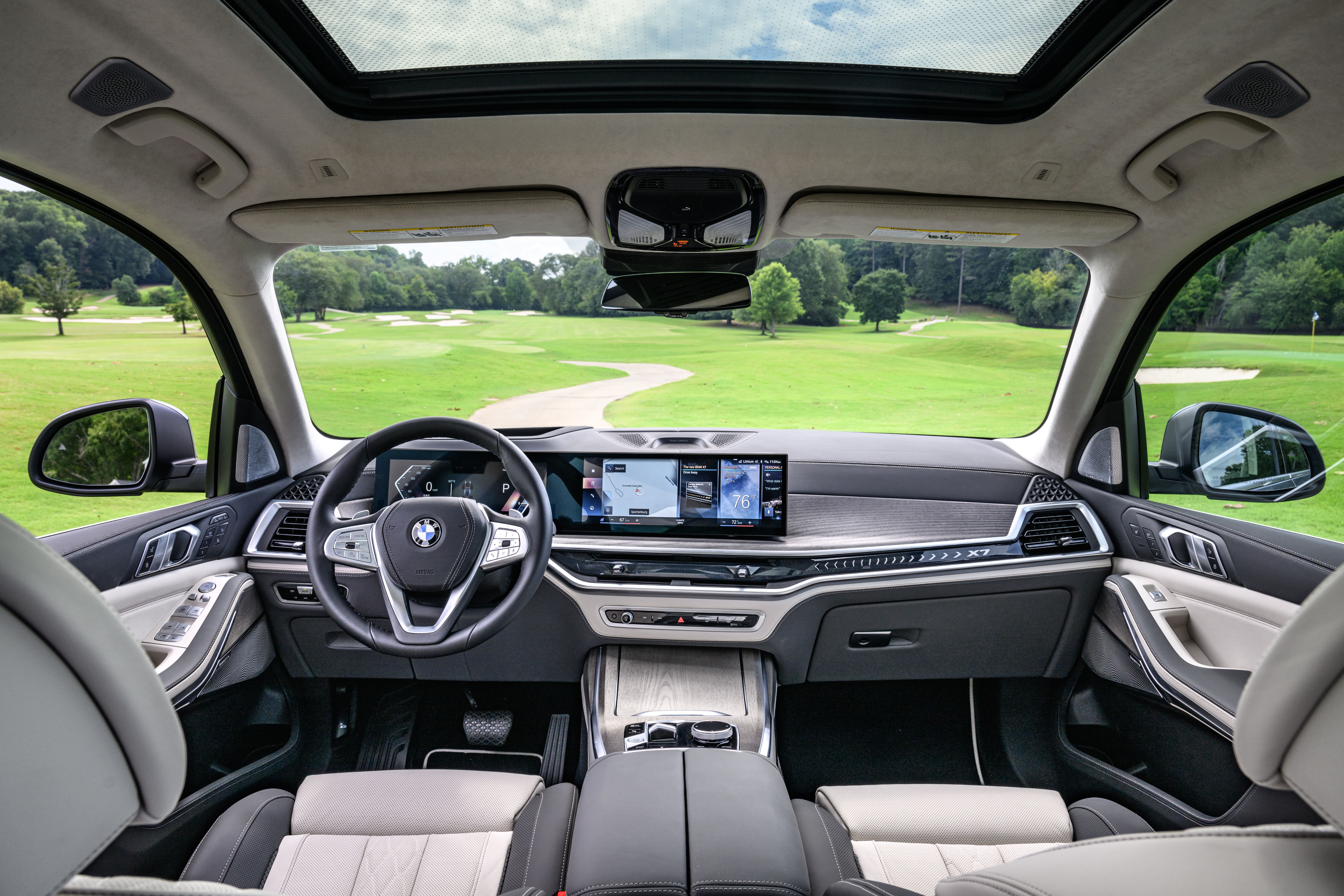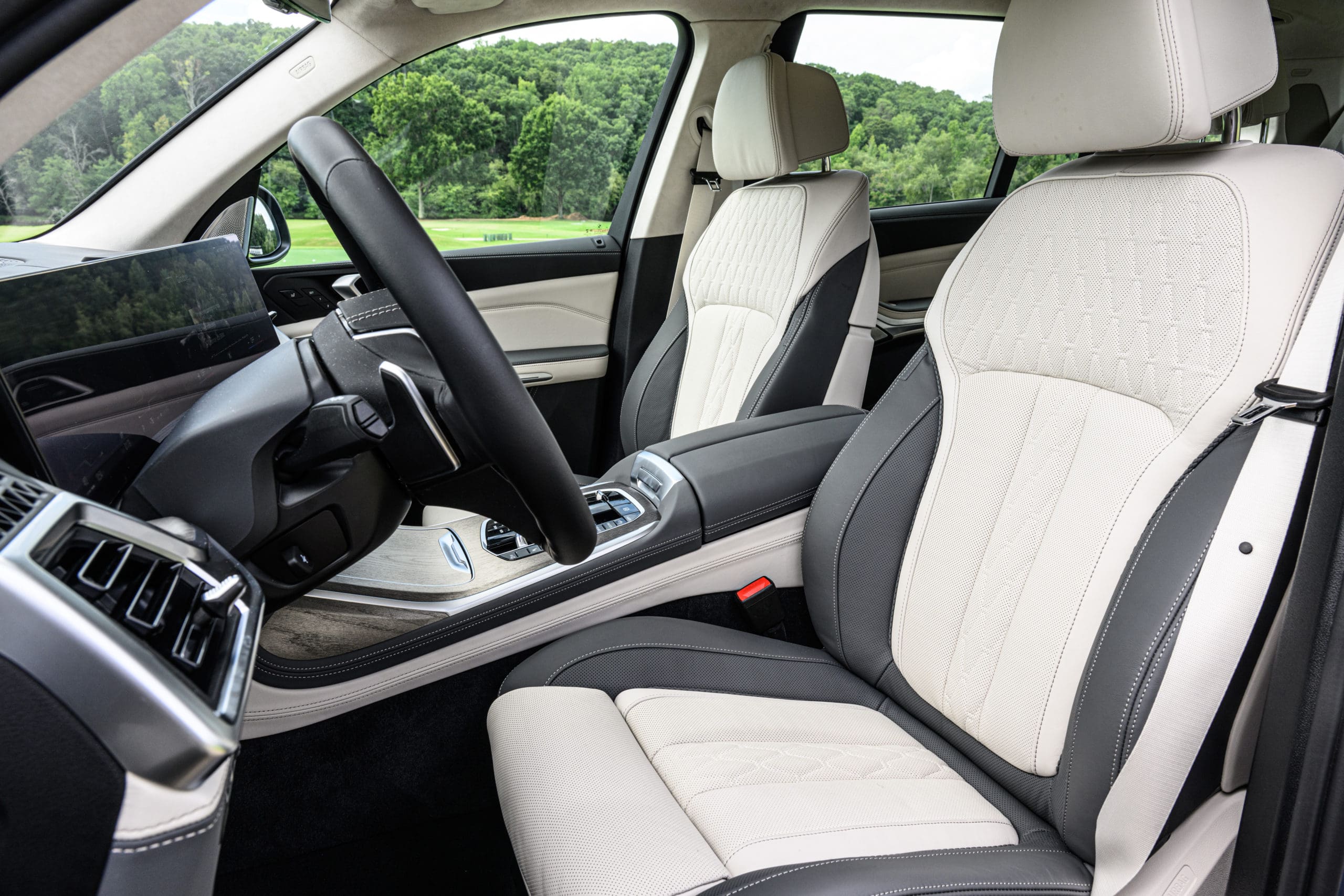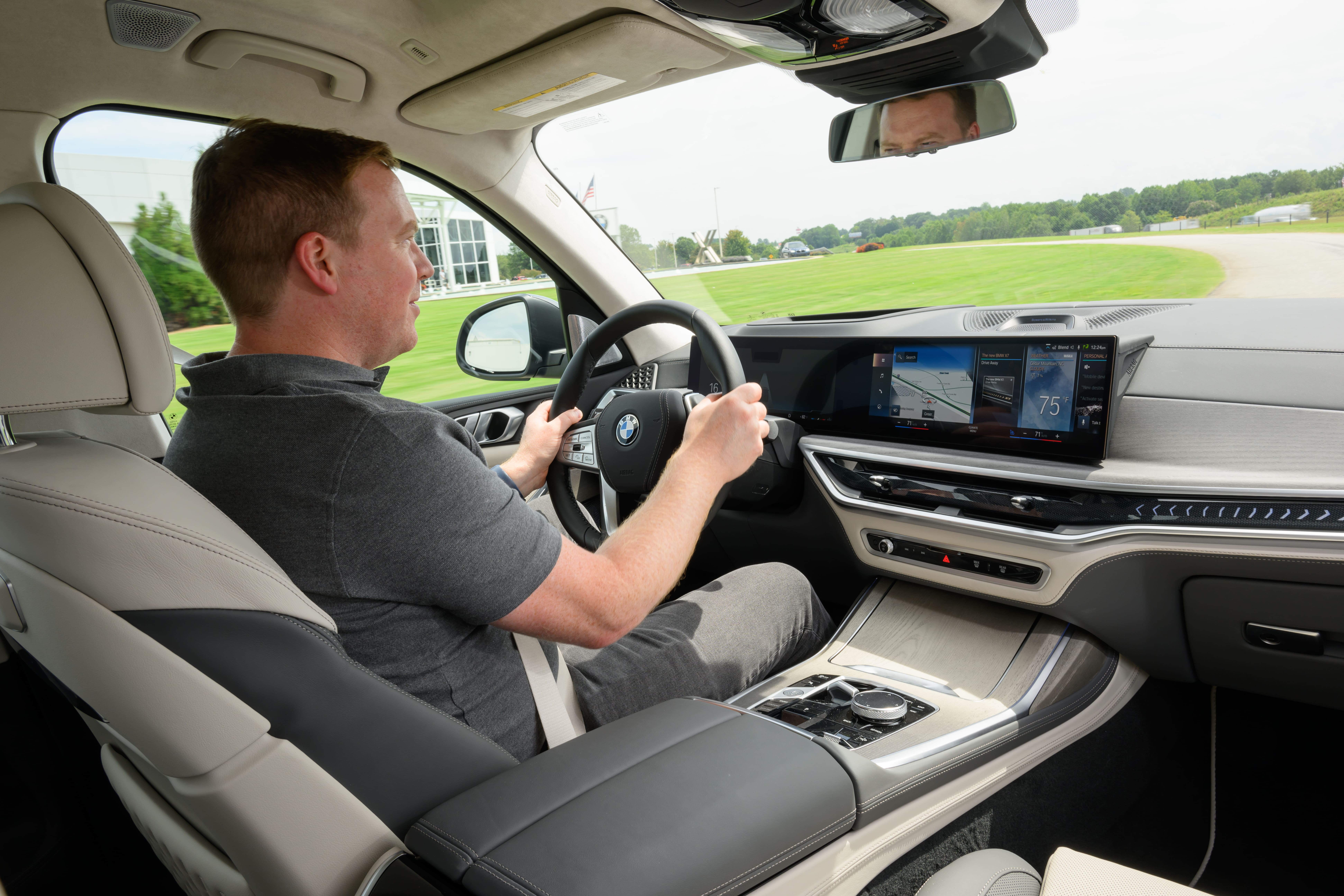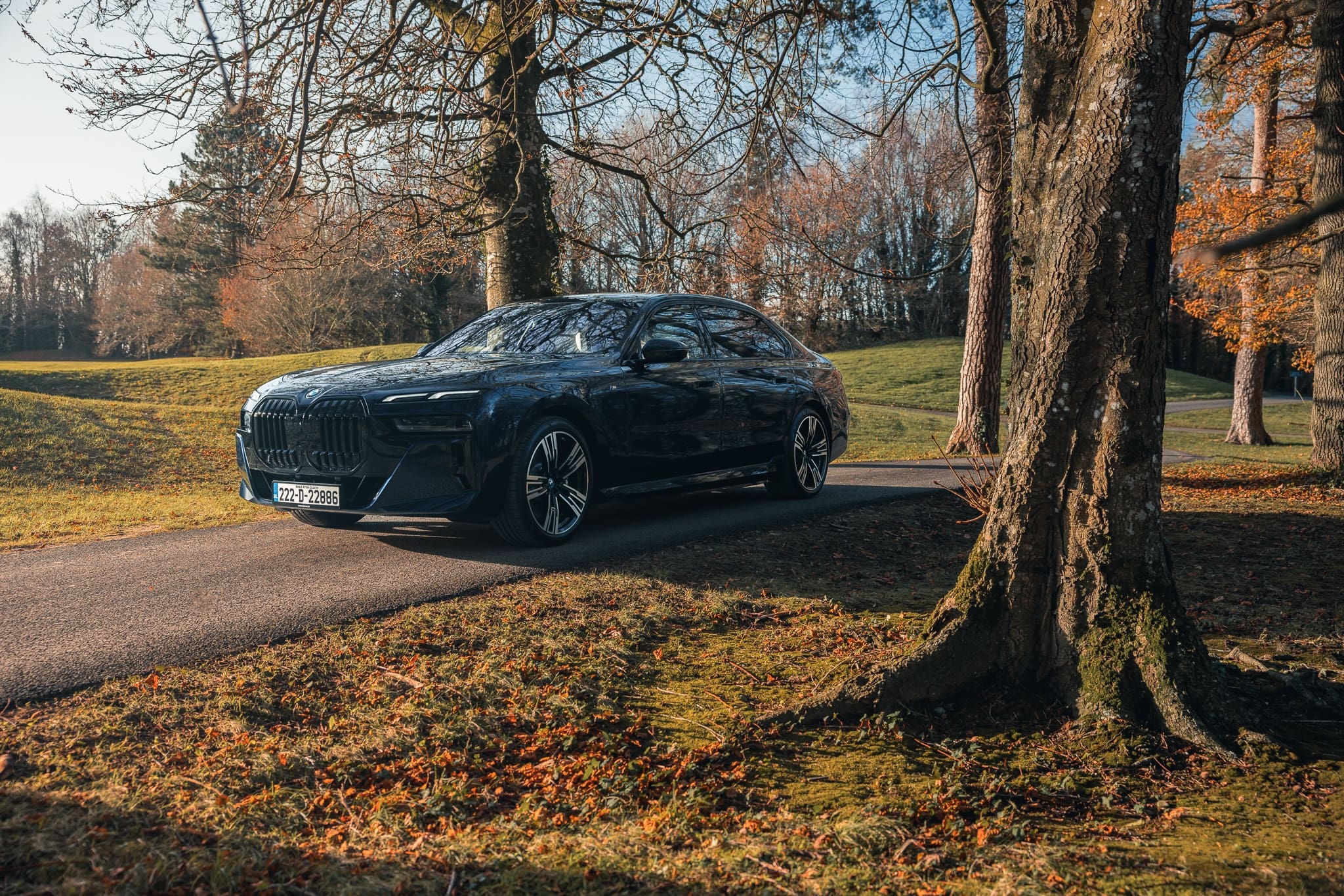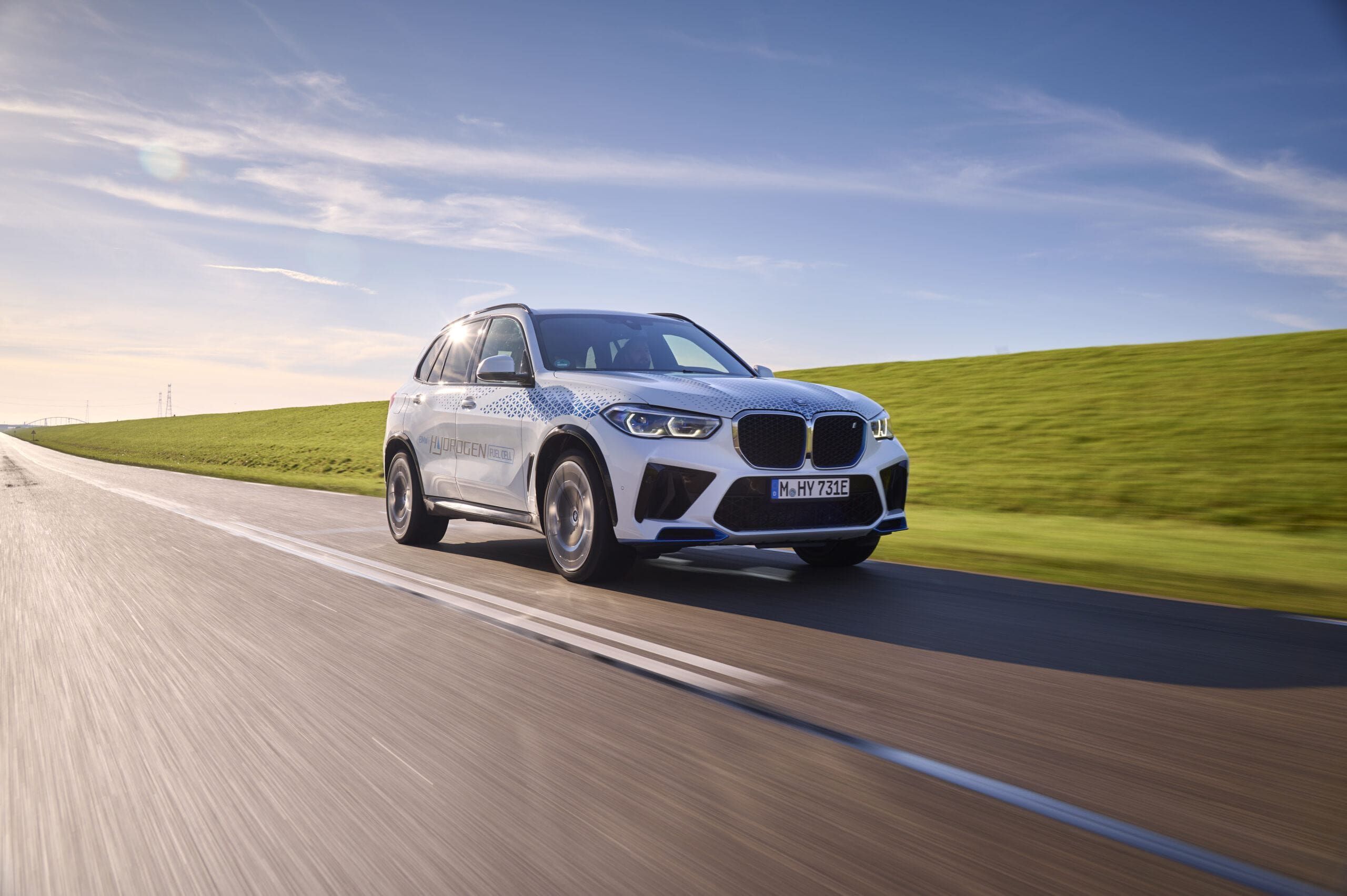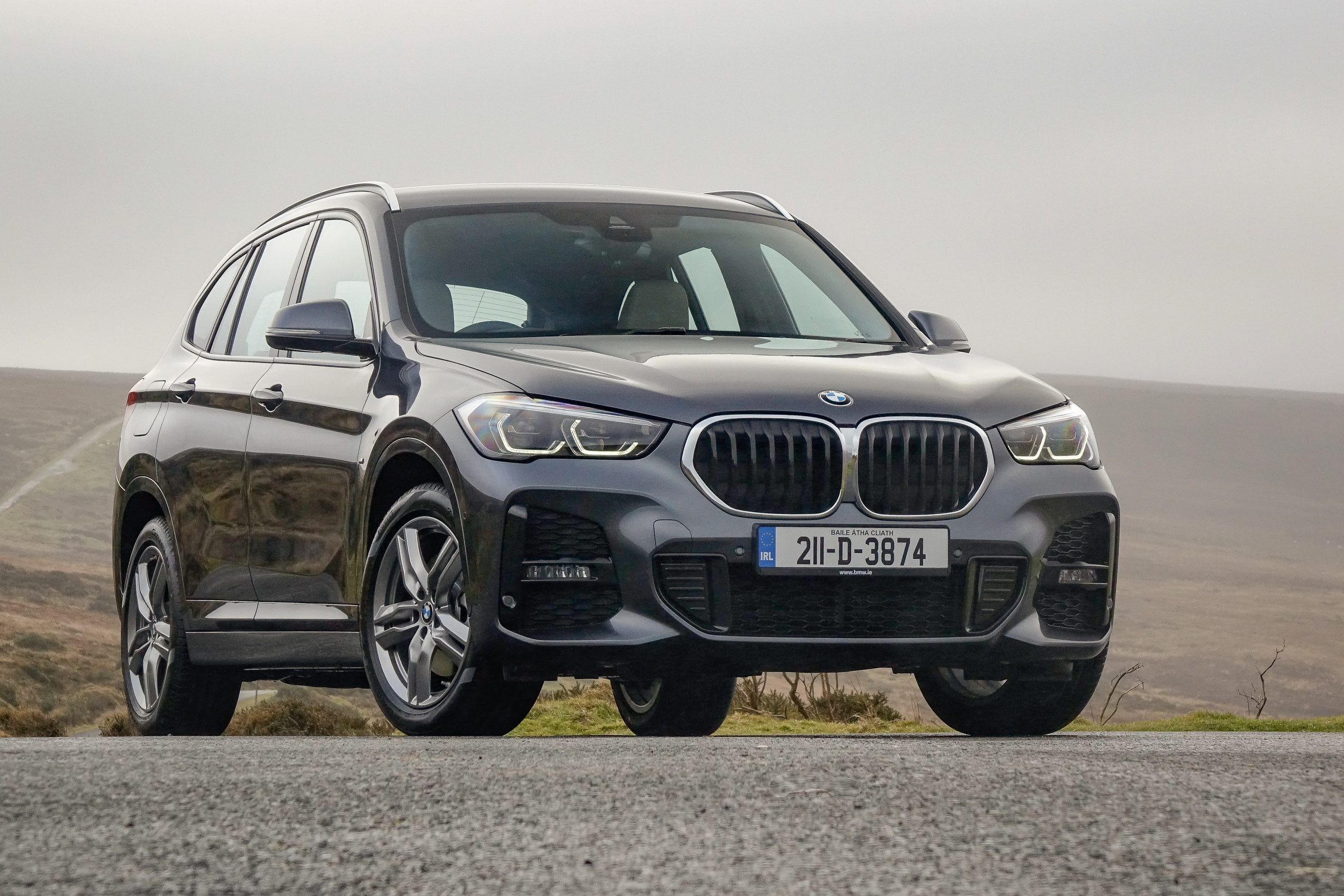Buckets of space, seriously luxurious interior, high specification, silky-smooth engine

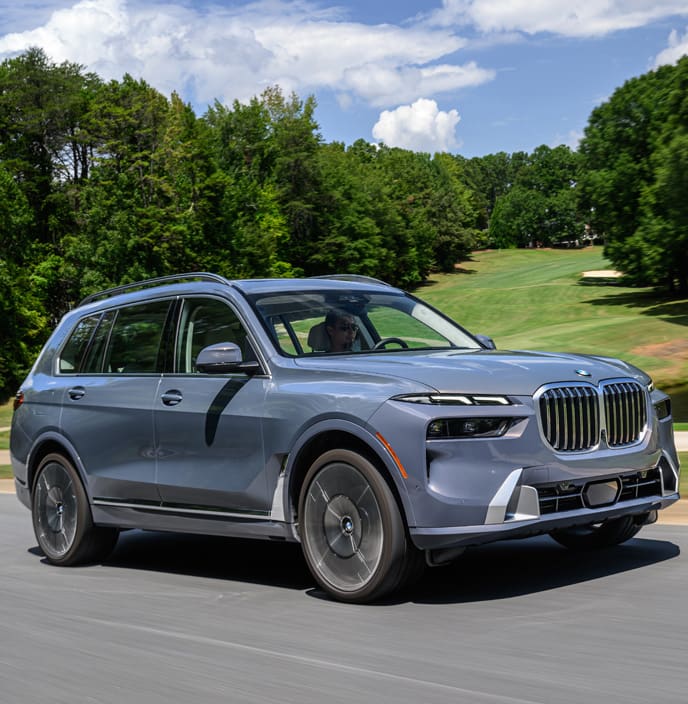
BMW
New Car Review: BMW X7 xDrive40i
Good Stuff 👍
Bad Stuff 👎
Too big for Irish roads, too ugly for many
What is the BMW X7?
Their top-dog SUV
The BMW X7 is the top dog in the company’s ever-expanding SUV line-up. The ‘7’ in the name is no accident, as BMW wants you to see it as a 7 Series luxury car on stilts. And that is pretty much what it is, though with a healthy dose of extra space and versatility, as the X7 has seven seats, a big boot and can tow significant loads. The X7 first hit the market in 2019, but to make sure it keeps pace with the incoming new 7 Series, BMW thought it prudent to give the big SUV a significant midlife update. It doesn’t get the electric and hybrid powertrains of the 7 Series, unfortunately, but the existing engines have all been upgraded, there’s more equipment as standard than before, the luxurious cabin gets BMW’s new curved dashboard display and associated technology and, you may have noticed the new front-end design.
How about the looks of the BMW X7?
No ignoring that nose!
BMW came in for some criticism when it first launched the X7 for its gigantic take on the traditional kidney grille up front. Little did we know that there was a lot more to come. And instead of toning down the design, BMW has instigated a brash new split-headlight style, shared with the new 7 Series. A slender LED strip takes on the role of indicators and daytime running lights, while the main headlamp unit is separate and lower down – it’s almost invisible on dark cars and integrates neatly with the upright vents at the outer edges of the bumper that channel air through the wheel wells in the name of improved aerodynamics. Pretty it is not, though BMW was going for presence, and it has certainly hit that target.
As with any midlife update, there are new paint colours to choose from and other detail changes. The X7’s rear lights have been subtly modernised, for example, and buyers can upgrade to factory-fit 23-inch alloy wheels for the first time, too.
Shane O’Donoghue“Leave your cynicism about supersized SUVs at the door and it’s impossible not to be impressed by what BMW has done with the X7”
What is the inside of the BMW X7 like?
Impressive dashboard design
As before, the X7 is a full seven-seater by default, and adults can fit in all of the seats, too. There’s electric adjustment and air conditioning for the seven occupants and luxurious trim materials throughout. Leather upholstery is standard, though a synthetic alternative is available as well. Buyers can opt to replace the middle row of three seats with two full-size chairs instead for the ultimate in luxury.
New to the X7 is a new multi-mode ambient light bar on the passenger side of the dashboard. This changes appearance for various functions, including an incoming phone call. We found it bit unnecessary.
The big news inside, however, is the adoption of the BMW curved dashboard design, housing digital instrumentation and a large touchscreen behind one smooth surface. This was first launched in the BMW i4 and iX and is slowly making its way across the rest of the line-up. It’s more than just a slender screen setup, however, as it brings with it BMW’s latest operating system, featuring a wealth of connectivity and driver assistance technology. Indeed, there’s so much going on in the system that it takes a while to acclimatise yourself to it. Owners of existing BMWs will have to relearn how to find their way around the menu. Nonetheless, it’s packed with features and is quick to respond, too.
Insurance up for renewal?
Get an AA Car Insurance quote online and save up to 20% or €180 when you buy online*.
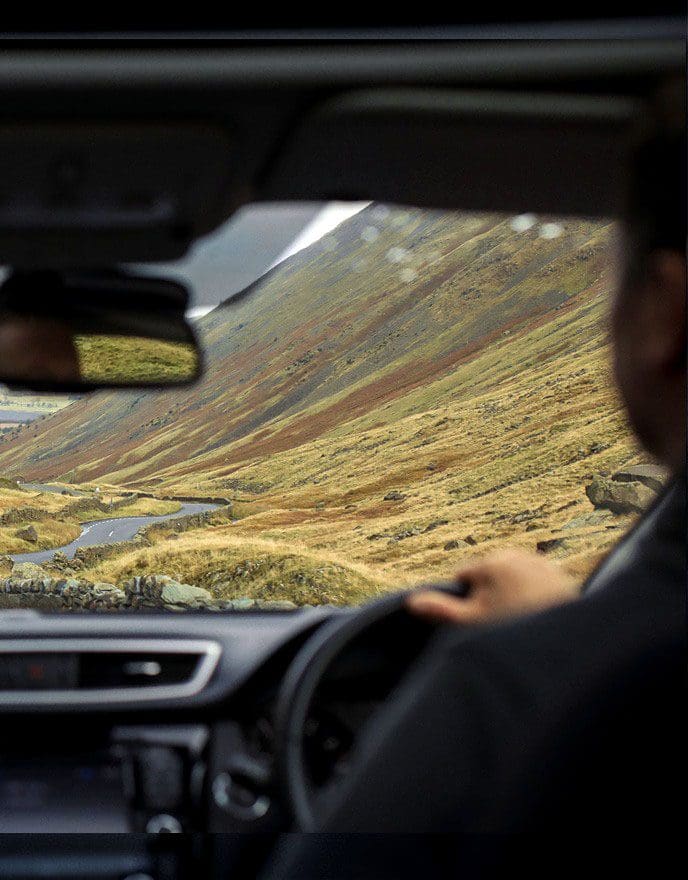
What is the BMW X7 like to drive?
Nimble despite its size
Leave your cynicism about supersized SUVs at the door and it’s impossible not to be impressed by what BMW has done with the X7. Here is a ginormous car that feels as easy to drive and almost as nimble as smaller models in the company’s line-up. Well-weighted steering and excellent body control help with all that, though in reality, what’s happening underneath the wide tyres is largely isolated from the driver’s senses.
That’s in the name of comfort and refinement, where the X7 scores highly. Its standard air suspension and adaptive dampers make for an exceptionally comfortable long-distance cruiser, but without a floaty feeling that you might expect it to have. Instead, the X7’s suspension just absorbs bumps in one movement and gets on with it. Double-glazed side glass helps keep wind and road noise at bay and though the diesel engine is audible most of the time, the petrol ones are all-but silent until you ask for a little more oomph.
And they have plenty of that. For the midlife update, all engines are now paired with a 48-volt mild-hybrid system. This features an electric motor in the housing of the new eight-speed automatic gearbox and a small extra battery under the bonnet to store energy regenerated for use at a later time. That motor can add a little low-down torque to the engine’s output as well, helping improve response, but nobody will detect it at work. Saying that, BMW says that the motor can actually propel the xDrive40i model for very short distances at very slow speeds. We didn’t notice it doing that once in our time with the car.
The xDrive40i model is powered by a turbocharged 3.0-litre straight-six petrol engine that has undergone a raft of improvements, enhancing efficiency and upping its performance, too. It puts out 380PS and 520Nm of torque to all four wheels (xDrive all-wheel drive is standard across the range) for a decent 0-100km/h time of 5.8 seconds. This is a huge seven-seat SUV, remember, and that’s only two tenths slower than the current Golf GTI Clubsport manages… What’s more, the engine makes a glorious six-cylinder rumble when it’s being extended, as cultured as it is sporting. Reason enough to have it over the diesel, we reckon.
Which BMW X7 should I buy?
Go for the X40i
There are three powertrains to choose from. The xDrive40d diesel (340PS, 700Nm of torque, emissions from 203g/km) costs from €150,944 in Excellence specification, which undercuts the equivalent Range Rover and Mercedes GLS (though they both can be had as lower-priced alternatives). Next up is the xDrive40i version tested here, actually the most popular variant on a global level. Prices start at €151,821 for that and both it and the diesel are available in sportier looking M Sport guise, too. Topping the line-up is the X7 M60i, defined as an M Performance Vehicle and powered by a twin-turbocharged 4.4-litre V8 petrol engine (530hp, 750Nm of torque) developed in conjunction with BMW’s M division.
So far, Irish buyers have only bought the diesel model and, given the lack of a hybrid or electric option, that may not be about to change. It’s such a shame that the addition of the plug-in hardware from the BMW X5 xDrive45e, for example, would mean no third row of seats. BMW’s research revealed that the seating was more important to buyers than the option for plug-in hybrid power. Given that situation, we’d suggest that, unless you’re on the motorway all day everyday, the sweet xDrive40i model is the choice of the line-up.
Is the BMW X7 safe?
Loaded with active and passive safety items
The BMW X7 hasn’t been tested by the Euro NCAP organisation so we don’t have independent data on its safety. However, BMW is among the world leaders in terms of safety of its vehicles, so we’d feel pretty safe in the X7. It’s loaded with active and passive safety equipment as standard, too, from a wealth of airbags to an upgraded front-collision warning system that also helps protect cyclists and pedestrians. Sophisticated parking assistance technology is also included, which is just as well given the size of the thing.
Verdict 👀
Spec Check ⚙️
BMW X7 xDrive40i
Engine
turbocharged 3.0-litre straight-six petrol with 48-volt mild-hybrid system
Power
380PS
Torque
520Nm
0-100km/h
5.8 seconds
Fuel Economy
9.6 l/100km
Top Speed
250 km/h
Transmission
8-speed automatic
CO2
217 g/km
Luggage Capacity
300-litres with all the seats up
Price as tested
€151,812





